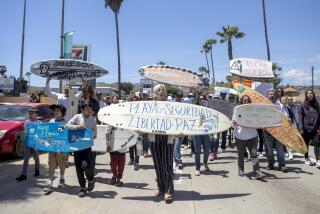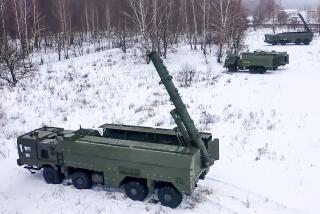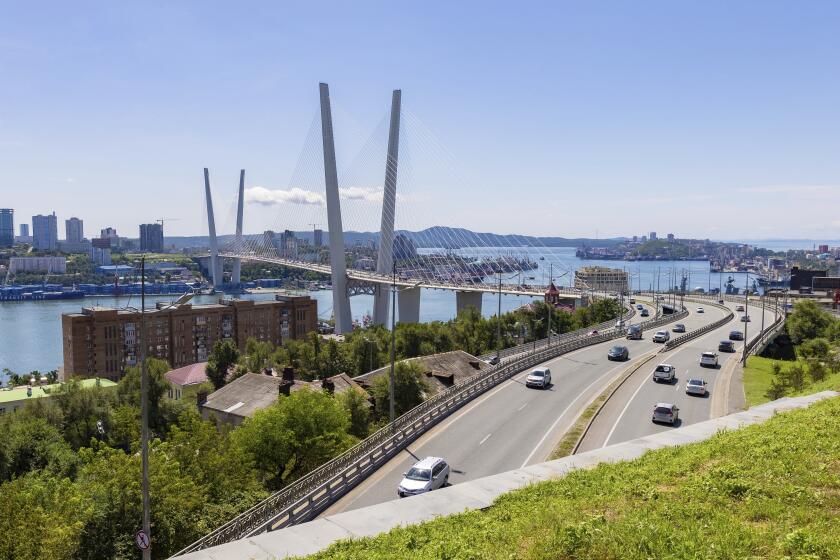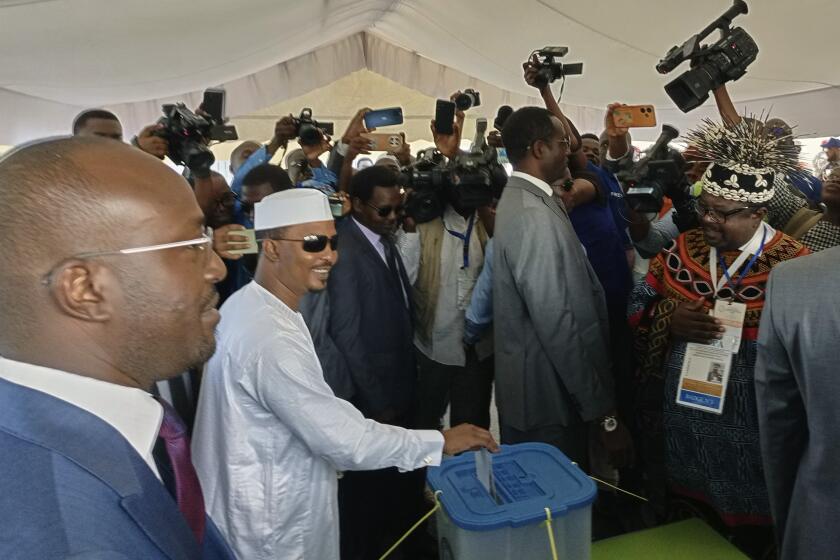Protection a Double-Edged Sword
The U.S. destroyer Cole was operating under “Threatcon Bravo,” one of the lowest terrorist-threat conditions, when two suicide bombers in a small dingy rammed it in Yemen and blasted a hole in its side, killing 17 sailors.
The 40-by-40-foot gash left in the ship in October 2000 was an unsettling reminder that despite greater protection efforts, U.S. troops worldwide are at risk of terrorist attack.
Worries about the safety of soldiers are heightened by President Bush’s decision to expand the war on terrorism. Sending military advisors and troops to the Philippines, Yemen and the former Soviet republic of Georgia means more time and money spent on protecting the military as it helps protect the world.
“We’re sending people into harm’s way, not quite in the same way as Afghanistan, but in harm’s way, and that can make them targets for terrorists,” said Dan Goure, a military analyst at the Lexington Institute in Arlington, Va.
As the threat against U.S. interests has risen over the last two decades, the military has steadily stepped up safeguards. Force protection ranges from Kevlar helmets to missile defense, strategic intelligence and CIA penetration of terrorist groups.
Shatterproof glass is installed, concrete barriers encircle buildings. The Pentagon is trying out high-tech devices such as ultraviolet radiation for neutralizing germ or chemical warfare agents in building ventilation systems and infrared devices that can detect and track people lurking in darkness outside military bases.
“The target doesn’t always have to be the bases themselves,” Goure said in an interview. “It’s the guys coming into the airport, then traveling the 20 miles down the road to the base, who might get shot up.”
When 19 American servicemen were killed by a truck bomb that exploded at Khobar Towers in Dhahran, Saudi Arabia, in 1996, the military worked to better protect bases and other fixed installations. Local combat commanders, for instance, were given more authority for force protection. Troops in Saudi Arabia were relocated from the city to more desolate quarters in the desert dunes.
After the Cole attack, the focus shifted to better protecting moving targets such as ships.
The commission investigating the attack called for more specific intelligence conveyed directly to ships. The active-duty military now must complete anti-terrorism training every year, not just within six months of being deployed overseas.
The Pentagon also changed the name of the Threatcon levels to force-protection conditions: Normal, Alpha, Bravo, Charlie and Delta--each with a list of progressive measures to be taken for protection. The change was made late last year to avoid confusion with the threat levels used to categorize terrorism threats for entire countries, not just specific troop locations.
For obvious reasons, soldiers in the field clam up when asked what they’re doing to protect themselves against a terrorist attack.
Sgt. 1st Class Tim, who would not give his last name, helps set up equipment to detect a possible chemical, biological or radiation attack at a base in Uzbekistan where 1,000 soldiers have been stationed throughout the Afghan war. “Our job is to detect so we can warn,” he told an Associated Press reporter who was visiting the base, which is surrounded by concrete barriers and barbed wire.
Sometimes staying home is the best way to minimize risk, said Charles Pena, senior defense analyst at the libertarian Cato Institute. He opposes dispatching troops to the Philippines to help wipe out the Muslim extremist Abu Sayyaf group, which has been linked to Osama bin Laden’s Al Qaeda terrorist network.
“Abu Sayyaf guerrillas number fewer than 100,” he said. “They were a separatist Islamic organization, but have really just become a kidnapping-for-money organization.”
In March, a team of U.S. military officers went to Yemen to lay plans for training a few thousand local troops on how to fight Al Qaeda members who may be hiding there.
The Pentagon also plans to send as many as 200 Americans to help train the military in the Georgia republic. Terrorists are believed to have taken refuge in the Pankisi Gorge near Georgia’s border with Chechnya.
“Georgia could be dangerous,” analyst Goure said. “If there are elements of the Russian intelligence service who don’t particularly want us in Georgia, it would be a relatively easy thing to organize a terrorist attack against us.”
Sometimes protecting the troops involves multiple threats with competing solutions.
Although concentrating troops and equipment at a base might thwart some terrorist attacks, dispersing personnel might make them less vulnerable to a missile attacks or biological or chemical agents.
Local conditions also can hamper efforts to safeguard troops. Aviano, Italy, a major base for forces operating in Kosovo, is a good example, Goure said.
“You fly in right over parts of the city,” he said. “If somebody wanted to put a Stinger [anti-aircraft missile] out a window, there’s really nothing you can do about it. You can’t clear the city.”
There’s also a danger of spending more time trying to keep troops safe than executing the mission, said Marcus Corbin, a senior analyst at the Center for Defense Information.
“The Americans in Kosovo really had a bunker mentality--not going outside the camp or not being allowed to go out without full combat gear on,” Corbin said. “That sort of puts a barrier between them and the local civilians.”
More to Read
Start your day right
Sign up for Essential California for news, features and recommendations from the L.A. Times and beyond in your inbox six days a week.
You may occasionally receive promotional content from the Los Angeles Times.






